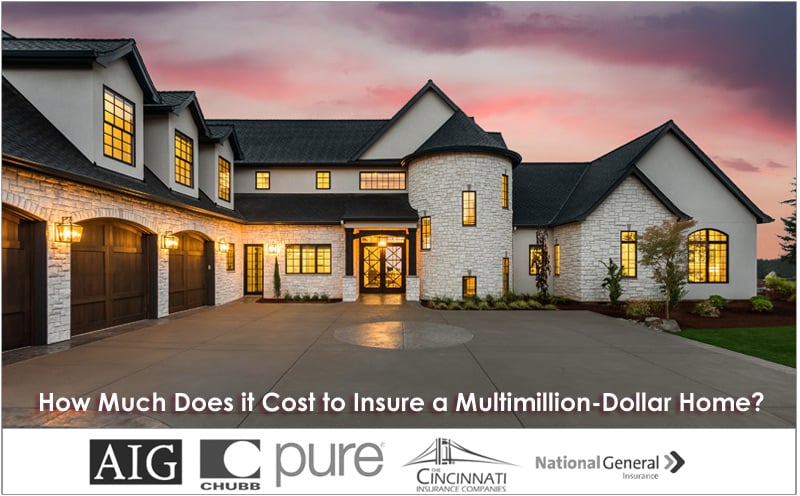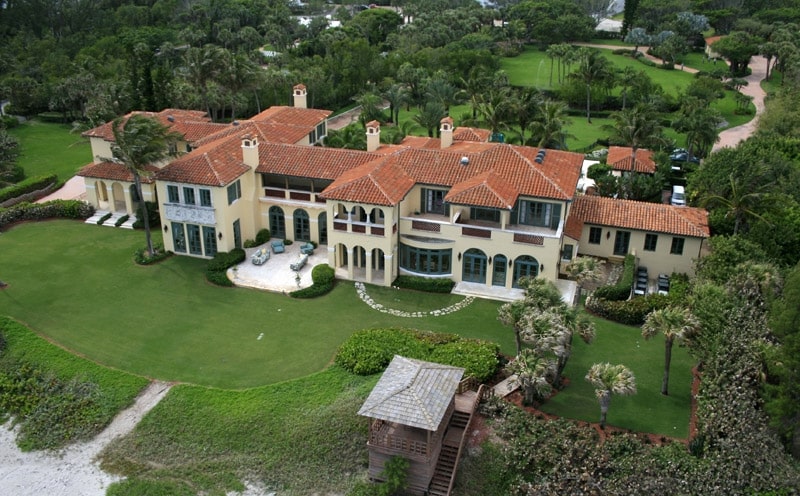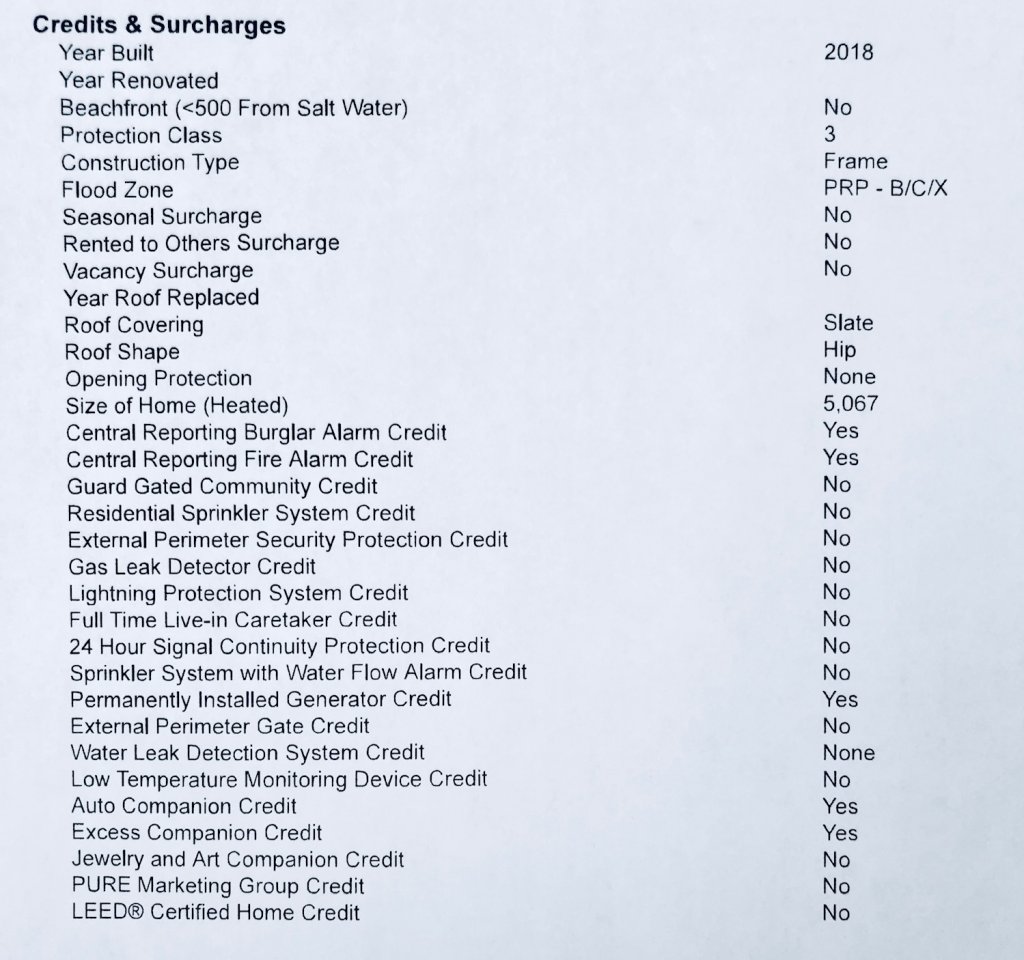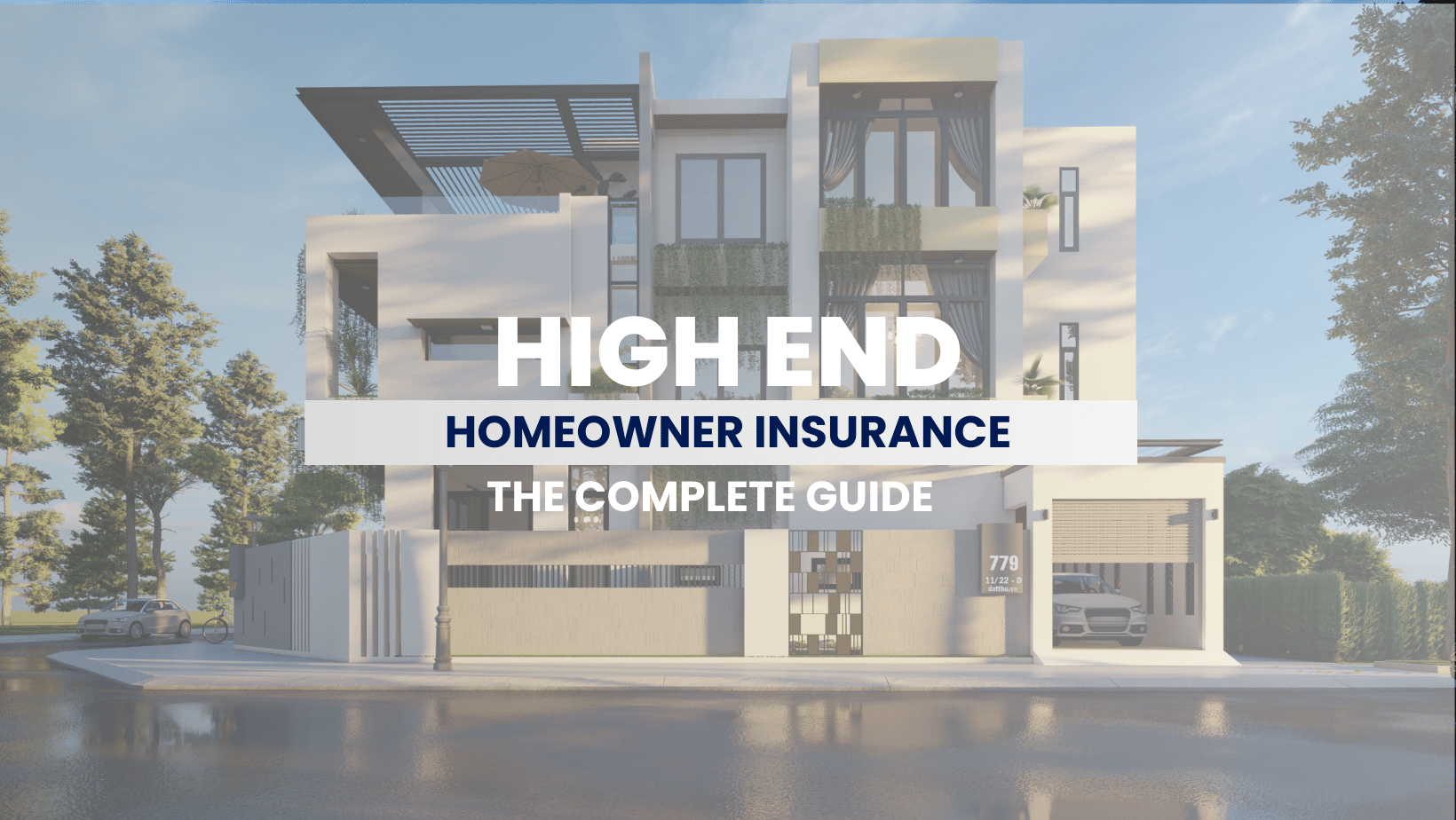
Updated as of April 23rd, 2023
Whether your home is valued at $1 million, $2 million, $3 million, $5 million, or even $10 million or more, multimillion-dollar homes come with a unique set of coverage considerations. While many of the coverages are similar to those for a less valuable home, the cost of insuring a luxury home, condo or co-op is higher not only because the insured value of the home is higher, but often also due to location, construction type, style of home, safety features, year built and a variety of additional factors.
Insurance rates for luxury homes can vary widely across the nation. Across the U.S., homeowners insurance rates can range between $0.05 per $100 of insured value all the way up to $1.14 per $100. Home insurance in Suffolk County, New York, for example, usually costs about $0.34 to $0.37 per $100 of insured value. However, it isn’t uncommon to find homes that fall outside of that range for a variety of reasons.
Homeowners insurance rates can consider hundreds or even thousands of data points to determine a premium, but don’t worry — we won’t discuss them all in this article. Instead, we’ll look at some of the largest considerations and discuss the basic factors that contribute the most to home insurance costs.
What drives high-end, luxury home insurance costs?
Let’s look at some of the biggest factors in determining high-value home insurance rates. You’ll find that most are related to risk, with factors that contribute more risk of a loss raising insurance costs and factors that reduce risk also reducing overall insurance costs.
Location: You may remember your realtor telling you location is everything in real estate. That’s often true, but your home’s location also has an effect on your home insurance rates — and sometimes in ways that aren’t always obvious.
A house located right next to the shoreline or next to a body of water costs typically more to insure than a home that’s inland. Some insurers charge a surcharge for homes within 500 ft. of saltwater. Exposure to storms and water damage is a more obvious concern, but insurers even look at location data such as crime statistics in the area to help determine the probability of a loss. Hundreds of data points may be considered when underwriters work with experts and insurance software to rate a risk, which is the industry term for pricing your home insurance policy.
Construction of home: The type of construction used for your home is also a meaningful factor in the cost of your policy. Masonry homes (brick & concrete block construction) can be more fire-resistant and have better durability in the face of storms and wind. In Florida, for example, most building codes require a home to be built using concrete so they can survive hurricane-force winds (74mph+ sustained winds).
In some cases, depending on the materials used and the construction methods needed to repair the home, masonry homes can also be more expensive to rebuild. The percentage of masonry compared to framing is considered as well. Most homes with masonry aren’t 100% of either type of construction. The type and shape of the roof on your home can also play a role in rates.
The cost to reconstruct your home: Square footage alone isn’t enough to determine a rebuild cost for your home. Particularly true for upscale homes, building materials can vary in price for homes in the same area or even for homes right next door. Homes built with more expensive materials or which may require special construction methods to rebuild typically cost more to insure than homes that use standard materials and standard construction methods.
Year Built: You might not think the age of your home matters when buying home insurance, but it can. While many older homes were extremely well-built, newer homes tend to have more safety features built-in as well as newer wiring, plumbing, and climate-control systems, all areas of a home that can lead to a home insurance claim. Generally, expect newer or newly updated homes to get a bit of a price break on insurance rates. The age of the roof can play a role as well. Roofs wear out over time, sometimes leading to water damage or making the roof more susceptible to wind or storm damage.
Your credit score or insurance score: You might not expect this one, but credit scores can affect insurance rates, with lower scores often leading to higher insurance rates. Insurance studies have found a correlation between credit scores and the frequency of claims, so this seemingly unrelated factor can affect rates in either direction. Some insurers refer instead to an insurance score, which considers both your credit score and your claims history.
Your loss history: In insurance-speak, a loss is a claim. If you’ve had recent insurance claims — even if with another insurer or for another property, your home insurance rates can be affected. The type and the amount of the prior claim can also drive rates, with larger claims or certain types of claims becoming underwriting considerations.
Packaged policy or standalone policy: This refers to whether you have a single policy with an insurer or whether you have more than one policy with an insurer. In many cases, there are extra savings available for bundling more than one insurance policy with a single carrier. Depending on the types of insurance policies you have with that insurer, you might earn a lower rate on just your home insurance policy — or possibly on multiple insurance policies of different types.
Your chosen deductible: The deductible is the part of the claim that you pay. Every home insurance policy has a deductible and often there is more than one, with different types of deductibles applicable to different types of claims. If you have a covered claim, the insurer pays the amount due after the deductible is subtracted from the covered loss amount. By choosing a higher deductible, you are assuming a larger amount of risk, which usually means lower rates for your home insurance. Claims that are valued below the deductible amount will not be covered by the insurer.
Discounts: Most home insurance providers offer a number of discounts, many of which are tied to factors that reduce risk. For example, an alarm system can discourage thieves or reduce the amount of time they’re willing to stay in your home taking and breaking things, thereby potentially reducing the loss amount.
Actual discounts & surcharges from a recent high-value home insurance proposal:
The cost to insure a multimillion-dollar home
To revisit, the common rates for a multimillion-dollar home on Long Island, NY, rates often fall within a range of $0.34 per $100 of insured value up to $0.37 per $100 of insured value. Of course, some may be higher and some may be lower, but let’s work with that range to learn how that rate applies to an annual premium.
The first thing to consider is the value of the house itself. Insurers aren’t looking at resale pricing when determining a coverage amount for your home. Instead, they’re using software (and occasionally building experts) to determine how much it would cost to rebuild your home to its original beauty in the event of a total loss. The rebuild cost estimate assumes the use of materials of “like kind and quality” so you’re assured that your home will be as good as new after repair or rebuilding.
The insured value of your home may or may not coincide with the market value of your home. Markets go up and down and sideways, whereas the insured value tends to take a slow upward slope that accounts for inflation in building materials and the rising cost of labor.
Cost of insurance for a $1 million home
The cost to insure a million-dollar home will vary a great deal based on location, the individual characteristics of each home and the unique needs of the homeowner. Not only do rates for million-dollar homes vary greatly around the country, but each high-value homeowner has their own individual considerations, requiring a customized high-value home insurance package.
It goes without saying that the cost of a high-value home insurance policy designed for a $1 million-dollar home will be greater than the cost of a standard mass-market policy designed for less valuable homes. The increased cost is not only because the insured value of the home is higher, but often also is the result of a premium location with greater geographic risk considerations.
While the costs vary, let’s go through an example of coverage costs for a $1 million home on Long Island New York. A fair estimate to use for this example is $0.34 per $100 of total insured value.
We will assume that this $1 million home has another $250,000 of “other structures” including a pool and that the personal property is valued at 50% of the home’s value, $500,000. Therefore, this $1 million Long Island home is insured in total for $1.75 million.
With $0.34 per $100 of coverage, this $1 million home would have an estimated annual premium of $5,950.
Here are the key factors that are used to determine the rate of an insurance policy for a $1 million dollar home:
- Location of home
- Construction type of home
- The cost to reconstruct your home
- Year built
- Your credit score or insurance score
- Your loss history
- Packaged home policy or standalone home policy
- Deductible
Cost of insurance for a $2 million home
For a $2 million home, the same formula can be used to estimate the cost of home insurance, assuming $0.31 per $100 of coverage. The home itself would be insured for $2 million, the other structures would have an insured value of $500,000, and your personal property would be insured for up to $1 million. Your total insured value for your home is now $3.5 million, giving you an estimated insurance cost of $10,850 per year.
While $0.31 per $100 is a common range in areas like Nassau County, New York, some insurers offer an additional discount for LEEDS-certified construction. LEEDS stands for Leadership in Energy and Environmental Design and in many cases, the benefits go well beyond a lower insurance rate, potentially including tax benefits and enhanced resale value.
Of course, there’s a bit more to an insurance policy than just covering the home, its contents, and a few other buildings on the property. A number of other common variables can drive insurance costs up or down.
Cost of insurance for a $3 million home
By using the same formula, you can also estimate the cost of insuring a $3 million home, assuming a rate of $0.30 per $100 of coverage. In this case, the home would be insured for $3 million, with other structures having an insured value of $750,000, and personal property insured for up to $1.5 million. This brings your total insured value to $5.25 million, resulting in an estimated annual insurance cost of $15,750.
Cost of insurance for a $5 million home
To apply the same formula and assuming $0.26 per $100 of coverage for a $5 million home, you would assume that other structures on the property, including buildings and fences, are insured for 25% of the home’s insured value, or $1.25 million. For personal property, assume an insured value of 50% of the home’s insured value, or an additional $2.5 million. Now, you have a total insured value of $8.75 million and an estimated insurance cost of $22,750.
The Cost to Insure a Multimillion-Dollar Home
Cost of insurance for a $10 million home
For a home that’s insured for $10 million with a rate of $0.25 per $100 of insured dwelling value, the cost to insure the just the home might come in around $25,000 per year. However, that’s just the house itself. We’ll have to adjust that figure for other structures on your property as well as add some coverage for your personal property.
Let’s say your $10 million home has another $2.5 million in other structures on the property. Let’s also assume that your personal property, meaning your furniture, clothing, valuables, and household items, is valued at 50% of the home’s value, or another $5 million.
Now, your $10 million home has a total insured value of $17.5 million. At $0.25 per $100 of coverage, you can expect to pay about $43,750 annually to insure the home, other structures, and contents.
The best way to find the true cost of insuring your high-value home is to reach out for a personalized quote. In each household, and particularly for financially successful families, there are a number of considerations that make ballpark estimates less than accurate. Insurance can function better at its role of protecting your family when all the risks can be addressed at once, including home coverage, personal liability, cyber liability, and other potential exposures. It all begins with a conversation. Reach out so we can discuss your needs.
Top 5 List of Best Insurance Companies for protecting for High-End, Luxury Properties
How Much Does it Cost to Insure a Multimillion-Dollar Condo?








